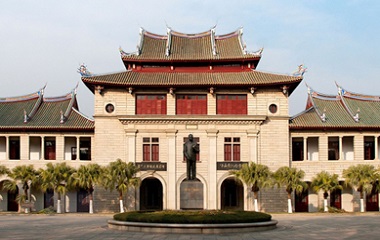International students from Peking University, Beijing Foreign Studies University, Beijing Language and Culture University, Beijing Film Academy and Beijing International Studies University attended the fifth International Youth Saloon, hosted by the China International Youth Exchange Center (CIYEC) in the Chinese capital last Wednesday. The students watched the dance drama Pingtan Impression and participated in insightful discussions with the main actors and producers.

Pingtan Impression's story originated in the Maritime Silk Road city of Pingtan, Fujian province, with marine culture as its core element. The dance drama displays intangible cultural heritage and folk customs from Fujian and Taiwan provinces such as puppetry, cane shield exercise, lion and dragon dance and god pageant ceremony, helping international students to gain a better understanding of traditional Chinese culture. The legend behind the story is based on the common folk customs of Fujian and Taiwan, not only displaying that cultures from both sides of the Taiwan Strait share the same root, but also embodying the Maritime Silk Road spirit of openness and inclusiveness.

During the conversation, actors and producers talked about how their roles were created based on various cultural elements and explained the cultural elements through dancing and making cultural analogies, enabling international students to understand the profound cultural meanings in each design. Ada Christine Stephanie, a student from Cameroon, said she was deeply moved by the actors' enthusiasm for their art, and was amazed by the profoundness and diversity of Chinese culture. She found that though Chinese cultural elements may be similar, they can be different in terms of form and connotation.
After the conversation, the international students were invited backstage to take a closer look at the costumes and stage properties. They were impressed by the delicate art crafts. Guided by the actors, the students also experienced some of the movements in the drama, trying to express different emotions, feel the charm of traditional Chinese culture and know more about the Chinese spirits each movement stands for.

Fascinated by the folk custom of Fujian and Taiwan, Dina Lorena Wu Zhong from Panama hopes that she could experience customs from more places and share these experiences with her friend, further enhancing mutual learning and exchanges among cultures. Philippine student Ezra Danielle Macabeo said the drama made her feel Chinese people's confidence in their own culture. "The respect for traditional culture and pursuit of cultural innovation ensure the vitality of Chinese culture," she said.
Lee Chongyuan is a student from Malaysia whose ancestors came from Fujian province. The dance drama and the conversation reminded him of similar folk cultures and customs in Malaysia. He had a better understanding of the folk customs in Fujian and Taiwan and knew why cultures across the Taiwan Strait share the same root.
"Cultures from both sides of the Taiwan Strait are intertwined with each other and are inseparable," he said.










